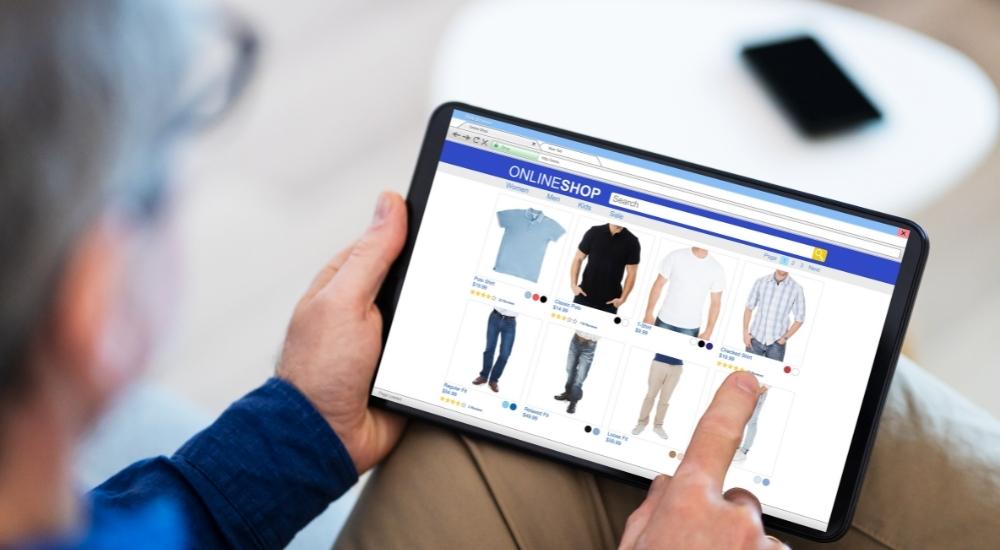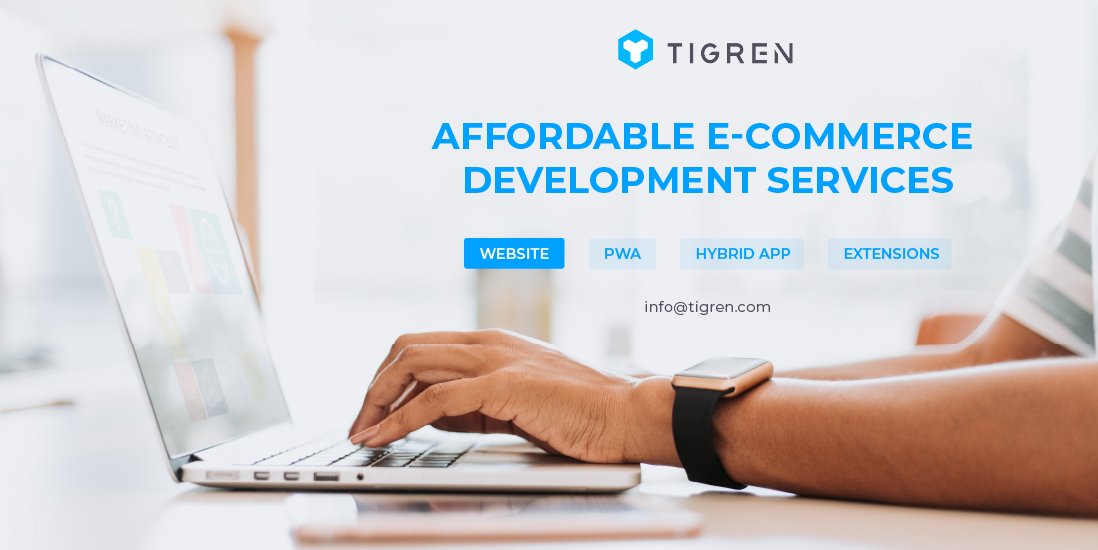Building a successful store would definitely require strenuous attempts and effort, but it is still easy to fail even when you have a great idea. There would be a lot of stuff to be concerned about that make you confused and don’t know how to start an eCommerce business. Therefore, owing to strong experience in the e-commerce industry as well as working with online startups, we have created a brief guideline for store owners who want to go online.
Contents
Five Factors You Should Consider Before Starting A eCommerce Store
First And Foremost, What Do You Sell?
Actually, there is almost everything sold on the Internet, and finding a unique product to sell is nearly impossible. However, if you still want to start a business with highly-available goods and services and low competitiveness, the chance to succeed would be very low as well. Hence, we suggest you do market research market carefully and find your “niche” market.
For example, there is obviously a great deal of online cosmetics stores, why don’t you think about focusing on only one type of cosmetic such as cleansing oil/ water – indispensable stuff for women?
More specifically, you can provide different lines of cleansers, from multiple producers with a deeper understanding of the product. As a result, you would create a strong competitive advantage and stand out in the market.
Second, Whom Will You Sell To?

After deciding the goods and services you want to provide, you must define concretely your target customers. Each customer group will have certain needs so as a startup you should not and cannot serve all of them. In order to clarify your potential clients before starting an online business, you should answer the following questions:
- How old are they?
- Where do they live?
- Are they mostly men or women?
- Are they married or single?
- How much is your income on average?
- What are their interests and hobbies?
Once completing those questions, you have made a closer step toward your customers and are ready for the next step.
Third, What Is Your Target, And How To Get There?
It’s time to set a SMART (specific – measurable – actionable – realistic – timely) goal for your firm. Rushing to start an online business without a clear goal in mind might make you spend a huge amount of money and time uselessly. In contrast, the goal would be a magnetic needle for you to succeed and minimize risks in your path.
There are different types of goals that you can set for your business. The three most important ones are:
- Profitability goals
- Sales goals
- Customer engagement goals
For each type of goal, we need to answer these questions:
- What do I want to achieve?
- Why is this goal important?
- How will I know if I achieve this goal?
- What resources and support do I need to achieve this goal?
- When do I want to achieve this goal?
Fourth, who will help you to build the website?
Now, let’s start implementing your plan by finding a suitable website design and development company to build your online store. Currently, there are hundreds of e-commerce solution providers on the market, which can make you feel a headache choosing. Here are 5 steps to choosing a good website design and development company that meets your need.
Fifth, Which E-commerce Platform Is Suitable For Your Business?
To open a restaurant, you need to hire a great chef and buy good ingredients. Similarly, starting an online business asks you to hire a quality web development agency and choose the right e-commerce platform.
Although there are many available platforms such as WooCommerce (built on WordPress) Wix, Shopify, Magento, Weebly, and Squarespace, Magento seems to be the most popular. We also highly recommend you consider using this platform due to its outstanding features and functions and it’s free.
Steps To Start An eCommerce Business

Step 1: Dive deeply into the eCommerce sector and figure out your niche
E-commerce is all about selling products or services online. If you want to start an e-commerce business, you need to find a niche market. A niche market is a specific group of people that you can target with your product or service.
To find your niche market, ask yourself these questions:
- What are my interests?
- What are my passions?
- What do I know a lot about?
- What do I have experience with?
- What do I want to learn more about?
Once you’ve answered these questions, you should have a good idea of what your niche market is. The next step is to find products or services that you can sell to this market.
There are two types of e-commerce businesses: online stores and digital products. Online stores are physical businesses that sell products or services online. Digital products are intangible goods that are sold electronically, such as e-books, software, or membership sites.
If you’re not sure which type of e-commerce business you want to start, here are some things to consider:
- Do you want to sell physical products or digital products?
- Do you want to have your own website or sell through a marketplace like Amazon or eBay?
- Do you want to be in complete control of your business, or do you want to outsource some of the work?
- What type of products or services do you want to sell?
Once you’ve answered these questions, you should have a good idea of what type of e-commerce business you want to start.
Step 2: Define your business name and legal structure
After you’ve decided on the type of e-commerce business you want to start, it’s time to choose a name for your business. This is an important decision, as your business name will be used on all of your marketing materials, including your website, social media accounts, and email list.
Your business name should be reflective of your brand and what you sell. It should be easy to remember and pronounce so that potential customers can easily find you online and offline.
Once you’ve selected a name for your business, you need to choose a legal structure. The most common legal structures for e-commerce businesses are sole proprietorships, partnerships, limited liability companies (LLCs), and corporations.
The legal structure you choose will determine the tax implications of your business, so it’s important to choose wisely. If you’re not sure which legal structure is right for you, consult with an accountant or attorney.
Step 3: Register for an EIN
If you’re starting an online store, you will need to apply for an Employer Identification Number (EIN). An EIN is a nine-digit number that is used to identify your business for tax purposes.
You can apply for an EIN online, by mail, or by fax. The process takes about 10 minutes, and you will need your Social Security number, business name, and business address.
Step 4: Acquire business permits and licenses
Depending on the type of business you’re starting, you may need to obtain certain permits and licenses from your state or local government. For example, if you’re starting a restaurant, you’ll need to obtain a food service license.
To find out which permits and licenses you need, contact your state’s Department of Business Regulation or your local Chamber of Commerce.
Step 5: Build your website using an eCommerce platform

The next step in starting your eCommerce business is to choose an eCommerce platform and create your website. There are many different eCommerce platforms to choose from, such as Shopify, WooCommerce, Magento, and BigCommerce.
When choosing an e-commerce platform, you should consider the following factors:
- Ease of use: The platform should be easy to use, even if you don’t have any technical experience.
- Cost: The platform should be affordable. Many e-commerce platforms have monthly subscription fees.
- Features: The platform should have all the features you need to run your business, such as product listings, shopping carts, and payment processors.
- Support: The platform should have good customer support in case you need help using the software.
Once you’ve selected an eCommerce platform, you’ll use it to create your website. This process will vary depending on the platform you choose, but most platforms have built-in templates that make it easy to create a professional-looking website.
Step 6: List products
If you’re starting an online store, you need to have products to sell. There are a few different ways to get products to start an ecommerce business:
- Source products from suppliers: If you’re selling physical goods, you’ll need to find manufacturers or wholesalers who can supply you with products.
- Develop your own products: If you’re selling digital products, such as ebooks or software, you can develop these yourself or hire someone to do it for you.
- List products on consignment: If you’re selling products on behalf of other businesses (such as arts and crafts), you can list these items on your website and only pay the business when the product is sold.
Step 7: Set up payment processing
Once you have products to sell, you need to set up a way for customers to pay for them. There are a few different options for payment processing:
- Use a third-party payment processor: If you’re using an e-commerce platform, such as Shopify, you can use a third-party payment processor, such as PayPal or Stripe.
- Use a merchant account: If you’re not using an e-commerce platform, you can set up a merchant account with a bank or credit card processor.
Step 8: Market your e-commerce business

There are a lot of ways to market your eCommerce business. You can use SEO, advertising, social media, email marketing, and more. The most important thing is to keep at it and don’t give up. With time and effort, you will start seeing results.
Email Marketing
One way you can market your eCommerce business is through email marketing. This involves sending messages to potential and current customers about new products, special offers, and other news from your business. Email marketing can be a great way to keep people updated on what’s going on with your company, and it can also help promote sales and specials.
To get started with email marketing, you’ll need to create a list of email addresses. You can do this by collecting emails from people who visit your website or by purchasing a list of leads from a marketing company.
Once you have a list of email addresses, you’ll need to create an email marketing campaign. To do this, you’ll use an email marketing service like MailChimp or Constant Contact. These services will allow you to create professional-looking emails and track how many people open and click on the links in your message.
Email marketing can be a great way to reach out to potential and current customers. Just make sure that you’re using a reputable email marketing service and that your messages are interesting and relevant. Otherwise, you run the risk of annoying people or having your messages flagged as spam.
Social Media
Another way to market your eCommerce business is through social media. This involves using platforms like Twitter and Instagram to connect with potential customers and build relationships. Social media can be a great way to connect with people who might be interested in what you’re selling. It can also help you create a brand identity and build recognition for your business.
To get started with social media marketing, you’ll need to create accounts on the platforms you want to use. Once you have your accounts set up, take some time to fill out your profile information and post some pictures or videos. Then, start following other users and engaging with them. Like and comment on their posts, and share their content with your followers.
Social media marketing takes time and effort, but it can be a great way to connect with potential customers. Just make sure you’re being active and engaging on the platform, and that you’re not spamming people with too many sales pitches.
Advertising
Another option for marketing your eCommerce business is advertising. This involves paying for ads on platforms like Google or Facebook. Advertising can be a great way to reach potential customers who are searching for products like yours.
To get started with advertising, you’ll need to create an account with an ad platform like Google AdWords or Facebook Ads. Once you have an account set up, you’ll need to create an ad. To do this, you’ll need to choose your keywords, write your ad copy, and set your budget. Once you have your ad created, it will start running and you’ll start getting charged for the clicks or views it receives.
Advertising can be a great way to reach potential customers, but it can also be expensive. Make sure you’re only targeting people who are likely to be interested in what you’re selling, and that you have a well-designed ad that will grab their attention.
SEO
Another option for marketing your eCommerce business is SEO. This involves optimizing your website and content so that it appears higher on search engine results pages. This can be a great way to get organic traffic to your site and to reach potential customers who are searching for products like yours.
To get started with SEO, you’ll need to do some keyword research to find the right keywords to target. Once you have a list of keywords, you’ll need to optimize your website and content for those keywords. This involves adding keywords to your titles, tags, and descriptions. You’ll also want to make sure that your website is easy to navigate and that it loads quickly.
SEO can be a great way to get organic traffic to your site, but it takes time and effort. Make sure you’re doing keyword research and that you’re optimizing your site properly. Otherwise, you won’t see the results you’re hoping for.
If you put in the time and effort, you can find success in marketing your eCommerce business. Just make sure you’re using the right strategies and that you’re staying focused on your goals. With a little bit of hard work, you can take your business to the next level.
The Cost Of Starting An eCommerce Business

To start an ecommerce business, there are certain associated costs that must be considered. The cost to start an eCommerce business can vary depending on a number of factors, including the size and scope of the business, the type of products or services offered, and the technology and systems needed to run the business.
Generally speaking, however, there are some key expenses that all eCommerce businesses must budget for:
The domain name and website hosting
A domain name typically costs around $10-15 per year. If you need a custom or unique domain name, however, it could cost hundreds or even thousands of dollars.
The next step to start an ecommerce business is setting up your web hosting. This is where your website’s files will be stored and accessible to visitors. Web hosting can cost anywhere from a few dollars per month to hundreds or even thousands of dollars per month, depending on the size and scale of your website.
If you’re just starting out, you may not need much in the way of resources or traffic. In this case, you can probably get away with a shared web hosting plan, which will cost around $5-10 per month. If you start getting more traffic, however, you may need to upgrade to a VPS or dedicated server, which can cost $50+ per month.
Website design and development
If you’re not a web developer yourself, you’ll likely need to hire someone to build your website. Depending on the features and functionality you require, this could cost anywhere from a few hundred to several thousand dollars.
If you need a basic website with a few pages and no complex functionality, you can expect to pay around $500. For a more custom or advanced website, you’ll likely need to pay closer to $5,000.
Of course, these prices are just estimates – the actual cost of your website will depend on a number of factors, including your specific requirements, the development process, and the person or agency you hire to build your site.
Payment processing fees
If you plan on accepting credit card payments online, you’ll need to set up a payment gateway account with a provider like PayPal or Stripe. These providers typically charge a small percentage of each sale (usually 2-4%) plus a per-transaction fee (usually around $0.30). So, for example, if you’re selling a product for $100, you might end up paying $104 to the payment processor.
To offset these costs, many online businesses will add a surcharge to customers who pay with a credit card. This is especially common among small businesses and startups that are operating on tight margins. For example, a business might add a 3% surcharge to all credit card purchases.
Of course, you’ll need to weigh the pros and cons of adding a surcharge before implementing one. On the one hand, it can help offset your payment processing fees and increase your profits. On the other hand, it could alienate some customers and hurt your sales. Ultimately, it’s up to you to decide whether or not adding a surcharge is right for your business.
Shipping and fulfillment costs

If you’re selling physical products, you’ll need to factor in the cost of shipping and fulfillment. This can vary widely depending on the size and weight of your products, as well as your shipping destination(s). Make sure to research shipping costs and options thoroughly before settling on a fulfillment strategy.
You’ll also need to consider any packaging costs, which can add up quickly if you’re selling multiple products. And don’t forget about return shipping costs, which can eat into your profits if you have a high return rate.
All of these shipping and fulfillment costs can be passed on to your customers in the form of shipping charges. Many online shoppers expect to pay for shipping, so it’s important to be upfront about your shipping charges from the start. You can either include shipping charges in the price of your product or offer free shipping and build the cost into your overall prices.
Marketing and advertising
In order to drive traffic to your website and generate sales, you’ll need to invest in marketing and advertising. This could include paid ads, social media campaigns, email marketing, etc. The cost of marketing and advertising will vary depending on the strategies you use and the platforms you advertise on.
There are a few other miscellaneous costs that you may need to budget for as well, such as eCommerce software, returns and refunds, customer service, and taxes.
Overall, the cost to start an eCommerce business can range from a few hundred to several thousand dollars. Of course, there are always ways to cut costs and save money – it just takes a little creativity and resourcefulness.
Tips To Successfully Start An eCommerce Business
Starting a business can be a daunting task, but with careful planning and execution, you can be successful. When it comes to eCommerce businesses, there are certain tips that you should keep in mind in order to ensure your success.
Tip #1: Start Simple
One of the most important things to remember when starting an eCommerce business is to start simple. Don’t try to do too much too soon. Instead, focus on building a solid foundation for your business and expanding from there. Too many businesses make the mistake of trying to do too much too soon, which can lead to failure.
Starting simple also means not biting off more than you can chew. Don’t try to build the biggest and most complicated eCommerce site right from the start. It’s better to start small and expand as your business grows. Otherwise, you’ll likely get overwhelmed and give up before you even get started.
Focus on the essentials first and build from there. Don’t try to do too much too soon. Start small and expand as your business grows.
Tip #2: Share Your Business Across Multiple Channels
Another important tip is to start an ecommerce business is sharing your business across multiple channels. This means using multiple platforms to market your business. You can use social media, email marketing, and paid advertising, among other methods. By using multiple channels, you’ll reach more potential customers and increase your chances of success.
When you’re marketing your business, it’s also important to be consistent. This means using the same branding and messaging across all of your channels. By being consistent, you’ll create a stronger brand identity that will help you stand out from the competition.
Tip #3: Make Use of Customer Data

An often overlooked tip is to make use of customer data. This data can be used to improve your marketing efforts and target potential customers more effectively. By understanding your customers better, you’ll be able to sell them products and services that they’re more likely to purchase.
You can use customer data to improve your website design and user experience. By understanding how customers interact with your site, you can make improvements that will make it more user-friendly and increase the likelihood of conversion.
To start an ecommerce business, don’t forget to segment your customer data. This will allow you to target different groups of customers with different marketing messages. By doing this, you can ensure that your marketing is more effective and that you’re able to reach a wider audience.
Tip #4: Focus on the Customer Experience
Finally, it’s important to focus on the customer experience. This means providing excellent customer service and ensuring that your customers have a positive experience when they interact with your business. If you can provide a great customer experience, you’ll be more likely to retain customers and grow your business
There are a few key things you can do to improve the customer experience:
- Make sure your employees are trained to provide excellent customer service. This means teaching them how to be friendly and helpful and making sure they’re knowledgeable about your products or services.
- Be responsive to customer feedback. If you receive negative feedback, take steps to improve the situation. Show your customers that you’re committed to providing a great experience by making changes based on their feedback
- Make it easy for customers to get in touch with you. Provide multiple contact methods (such as phone, landline, email, and live chat) and make sure someone is available to help them during business hours.
Go above and beyond to solve customer problems. If a customer is unhappy with a product or service, do whatever you can to make things right. This could mean offering a refund, exchanging the item, or providing additional support.
Show your appreciation to customers. Send thank-you notes, offer discounts or coupons, or give out freebies on special occasions. Let your customers know that you value their business.
Tip #5: Invest in Multichannel Selling
Investing in multichannel selling is the last tip to start an eCommerce business. This means using multiple sales channels to sell your products and services. You can use online marketplaces such as Amazon and eBay, as well as brick-and-mortar stores. By using multiple sales channels, you’ll reach more potential customers and increase your profits.
Investing in multichannel selling is a great way to reach more customers and increase your profits. There are many different sales channels you can use, such as online marketplaces, brick-and-mortar stores, and more. Using multiple sales channels will help you reach the most potential customers possible.
If you’re not already using multiple sales channels, now is the time to start. Investing in multichannel selling is a great way to grow your business and increase your profits. There are many different sales channels available, so find the ones that work best for you and your products or services. Start using them today to reach more customers and make more sales.
By following these tips, you’ll get a grasp of how to start an ecommerce business. Just remember to start simple, share your business across multiple channels, focus on the customer experience, and invest in multichannel selling. With careful planning and execution, you can achieve success.
Wrap Up
So, there you have it. The beginner’s guide to starting your own eCommerce business. It can be a lot of work, but the payoff is worth it. Are you ready to get started? If so, Tigren is willing to help! Our team of experts has put together all the resources you need to start and grow your business. With more than 10 years of working with various online businesses, especially startups, we have a thorough understanding of your needs as well as enough capability to help you solve your difficulties.
We are designing a special package for small businesses. To find more information, please send an email to [email protected] or send us a Contact form.

See Also:
Small Vs Big Website Design and Development Company: What is the Better Option for Start-Ups?
5 Steps To Choose An Excellent Website Design And Development Company

